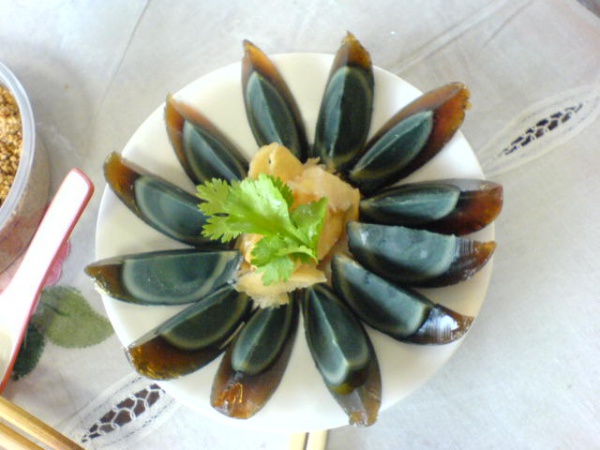Facts About Century egg
Century eggs, also known as preserved eggs, hundred-year eggs, thousand-year eggs, or millennium eggs, are a distinctive Chinese delicacy. These eggs—originating from ducks, chickens, or quails—undergo a preservation process that involves coating them in a mixture of clay, ash, salt, quicklime, and rice hulls for several weeks to several months. This results in a dark green to gray yolk with a creamy texture and robust flavor, and a translucent, dark brown egg white with a salty taste.
The origins of century eggs likely stem from the necessity to preserve eggs using alkaline clay. Traditionally, this preservation method employed a combination of wood ash, calcium oxide, and salt. However, modern techniques have simplified the process by soaking raw eggs in a solution of table salt, calcium hydroxide, and sodium carbonate.
Century eggs can be enjoyed on their own or incorporated into various dishes. They pair well with pickled ginger, tofu, or congee, and are also featured in a dish known as "old-and-fresh eggs" which combines century eggs with a fresh egg omelet.
Despite their popularity, there have been safety concerns about century eggs, particularly when some producers use toxic compounds like lead(II) oxide to accelerate the preservation process. In response, the Chinese government has implemented regulations to monitor food additives and ensure safety standards are met.
There are also myths surrounding century eggs, such as the unfounded belief that they are made by soaking eggs in horse urine. This claim has no basis in fact.
Century eggs boast a rich history that dates back at least four centuries, with tales of their discovery during the Ming Dynasty. They are a staple in Chinese cuisine and are enjoyed in a variety of dishes. Despite occasional concerns about their production, century eggs remain a cherished delicacy for many.
